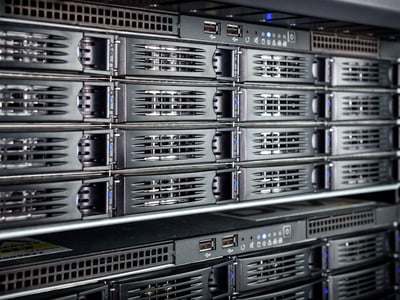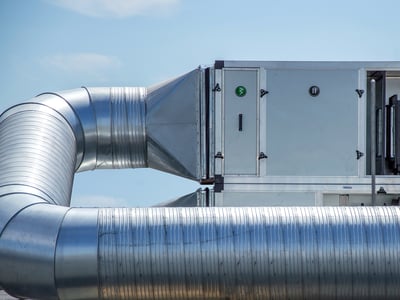There’s no time for downtime at a data centre. Keep your precious equipment – and people’s businesses – up and running with high-efficiency air filtration solutions.
Data centre customers around the world rely on Camfil’s air filtration solutions to maintain the flow of clean air and the flow of data. Not only do they help provide a healthy, safe indoor environment free from harmful air contaminants, but they can reduce the energy consumption of your power-hungry IT equipment.
Now more than ever, mission-critical data centres require high security and reliability. Indoor air quality plays a crucial role in keeping data centres, server racks and electronic components fully functional.
Particulate and gaseous contaminants pose a serious threat to this security. They can come from indoor sources, from people entering and exiting the building, and from outdoor ventilation systems. These contaminants can result in equipment downtime, complete failure or, in worst case, loss of data.
Data centres consume 2% of all the electricity used in the United States, and 32% of that is used by the air-conditioning system. In locations with a naturally cool climate, facility owners turn to free air cooling to solve their energy cost problems. But the incoming air must be purified to protect the equipment.
Camfil’s 5-star air filters can help you reduce your energy costs – in many cases, up to 40% or more. You can use our life cycle software to consider filter price, disposal costs, energy costs and labour costs associated with the air filtration solution.

Server rooms may be exposed to high corrosion levels from particulate or molecular gaseous contamination. PCBs, contacts and conductors are most susceptible to damage. Camfil air cleaners ensure high protection levels at low energy costs.

A computer room air handler or CRAH Unit is a device often used in data centres to cool the heat produced by the equipment. Filters are used in CRAH Units to capture any particles that can become airborne in the process of recirculation and redistribution of cooled air.

Air handling units that provide conditioned outdoor air to industries are a critical parts of facility systems, to create room overpressure and compensate for exhaust air. Make up air needs proper filtration for protecting coils and ducts, people, processes and products.

CamCarb XG Engineered for energy and maintenance cost savings in molecular contamination control applications
Food and beverage Electronics and optics Commercial and public buildings
Camfil launched the Hi-Flo bag filter range in 1969 and it has been our biggest success - Now we are introducing the Next Generation!
Innovation technology and research Commercial and public buildingsOften the initial purchase price for air filters or dust collectors is just the tip of the iceberg. The true costs for energy, maintenance and disposal are lurking below the surface. To make the most economic decision in the long-run, a detailed calculation considering all the factors will help to reduce your overall expenditure.
What are some of the challenges moving forward to achieve healthy and energy-efficient indoor air environments? And what are some of the new air filtration solutions that could potentially become a reality in the years to come?
Not all people who purchase our products are experts in air filtration and they shouldn’t have to be either. The purpose of Camfil City is to give everyone a chance to learn the basics of what our clean air solutions can do for them.
Air filters in data centres offer a host of solid business benefits in a whole range of different applications, but one of their most impressive uses is in data centres. They raise energy efficiency and lower energy bills along with providing healthy work environment.
To remain operational, data centres must be cooled to a specific temperature, and the physical equipment must be protected from the elements to avoid costly breakdowns. How can Camfil help you achieve the right temperature?
Some of the effects of corrosion include a significant deterioration of natural and historic monuments. Air pollution causes corrosion, and it’s becoming worse worldwide. Learn how to protect your equipment.